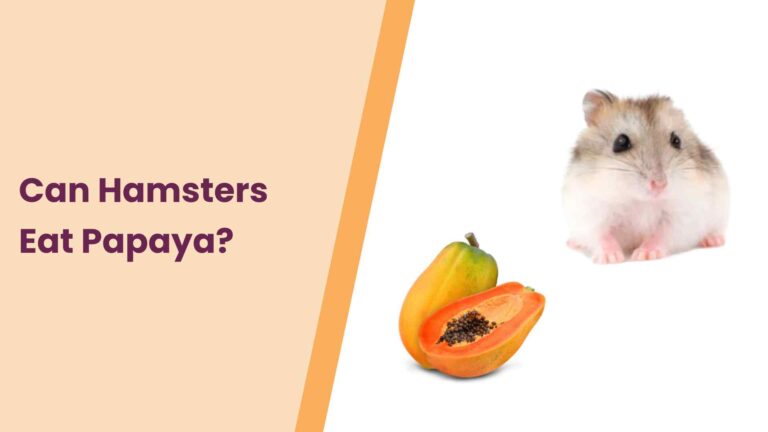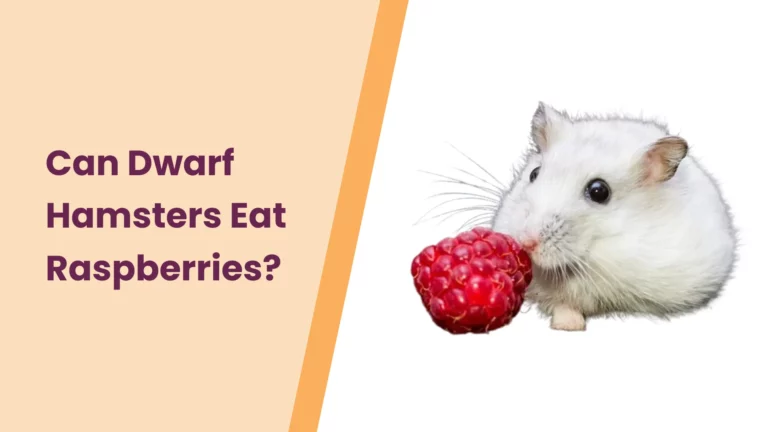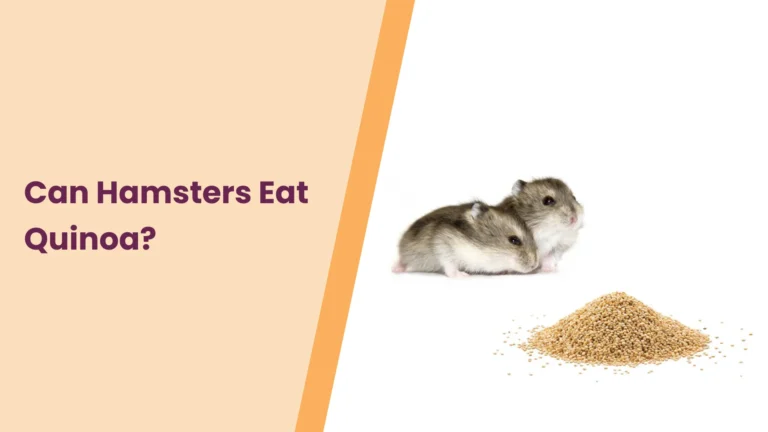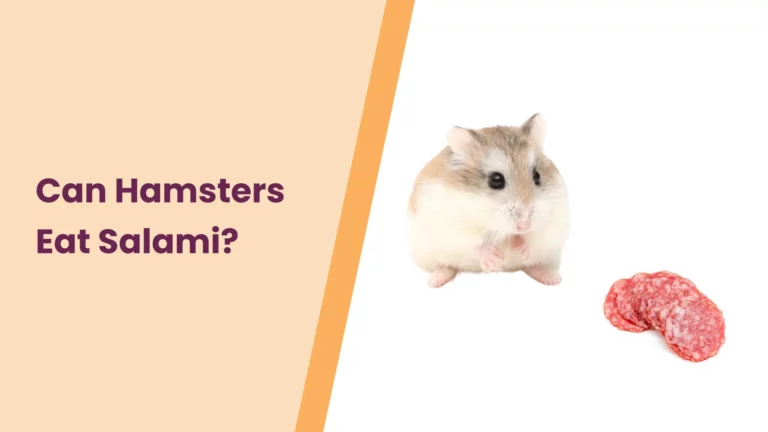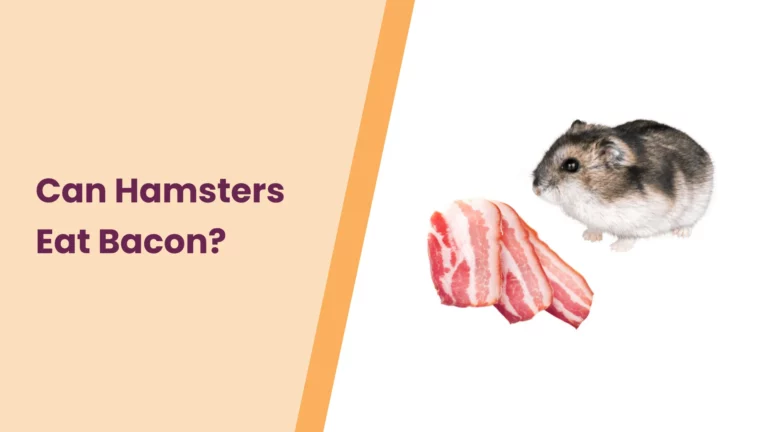Can Dwarf Hamsters Eat Celery? An Ultimate Guide
Are you a proud dwarf hamster parent looking to provide the best care for your tiny furball friend? You’re not alone! Hamsters are delightful and fascinating companions, and we all want them to thrive. Part of ensuring their well-being involves offering a well-rounded diet.
But wait, can these pocket-sized pets munch on celery? In this comprehensive guide, we’re about to uncover the truth about celery as a hamster snack. We’ll explore the nutritional benefits, potential risks, how to serve it safely, and even share some alternative treats.
Get ready to embark on a journey to enhance your hamster’s dining experience – because, after all, a well-fed hamster is a happy hamster!
Understanding the Dwarf Hamster Diet
Dwarf hamsters may be small, but their dietary needs are substantial. To keep your pocket-sized companion healthy and happy, it’s crucial to grasp what goes into their little food-loving hearts. Dwarf hamsters are omnivorous, meaning they have a diverse diet. In the wild, they enjoy a mix of seeds, grains, insects, and even the occasional plant matter.
As pets, we aim to replicate this balanced diet as closely as possible. But remember, moderation is the key to a healthy hamster. Too much of a good thing can lead to health problems. Balancing their diet with a mix of high-quality hamster pellets, seeds, and the right fruits and vegetables is essential.
And here’s the kicker – variety matters. Imagine eating the same meal every day; it gets boring, right? Well, our little friends feel the same way. Offering a range of foods not only keeps them interested but also ensures they receive a broad spectrum of nutrients.
Now that we’ve covered the basics of a dwarf hamster’s diet, you might be wondering, where does celery fit into this culinary adventure? Well, fear not; we’re going to dive into that delicious green topic shortly. But before we do, remember this golden rule: when it comes to feeding your dwarf hamster, balance and moderation are your best buddies.
Nutritional Benefits of Celery
As you delve into the world of feeding your beloved dwarf hamster, you’ll find that not all foods are created equal. Some offer a nutritional boost that can keep your furry friend sprightly and happy, and celery happens to be one of those gems. So yes, Dwarf Hamsters can indeed eat celery.

Celery is more than just a crunchy snack for us humans; it’s packed with goodness that can benefit your dwarf hamster too. Here’s a glimpse into the nutritional treasure trove within those green stalks:
Fiber: Celery is rich in dietary fiber, which can aid in your hamster’s digestion. A healthy digestive system is the cornerstone of overall well-being.
Vitamin K: This essential nutrient plays a crucial role in blood clotting and bone health. Even tiny hamsters need their bones and blood in tip-top shape.
Antioxidants: Celery boasts antioxidants that help combat harmful free radicals, potentially reducing the risk of certain health issues.
However, remember the golden rule we discussed earlier? It applies here too. While celery offers these benefits, it’s best served as an occasional treat. Excessive consumption of any food, even the healthy ones, can lead to problems.
So, the next time you share a piece of celery with your dwarf hamster, know that you’re treating them to a crunchy, nutritious delight. Just like us, they deserve a little healthy indulgence from time to time.
Risks and Concerns
As responsible dwarf hamster owners, it’s our duty to be well-informed about the potential pitfalls of our pets’ diets, even when introducing seemingly healthy treats like celery. So, before you start dishing out those green stalks, here are some crucial risks and concerns to bear in mind:
1. High Water Content: One of the primary concerns with celery is its high water content. While this might be refreshing for us, it can be a bit too much for your dwarf hamster’s tiny digestive system. Excessive water intake can lead to diarrhea, which is a situation neither you nor your hamster wants to deal with.
2. Pesticides and Chemicals: Another challenge is the possibility of pesticides and chemicals on commercially bought celery. Hamsters are highly sensitive creatures, and any residues left on their food can be harmful. If you decide to offer celery, make sure it’s thoroughly washed and preferably sourced from organic or pesticide-free suppliers.
3. Oxalates: Like many vegetables, celery contains oxalates, which can contribute to kidney stones in hamsters if consumed excessively. As such, it’s vital to stick to the “in moderation” rule. A small, occasional serving should be safe.
4. Allergies: Just like humans, hamsters can have allergies too. Pay close attention to your furry friend after introducing celery to their diet. Look for signs of any adverse reactions such as itchiness, hives, or changes in behavior. If you notice anything unusual, it might be best to skip celery altogether.
Remember, the key to hamster happiness is a balanced and varied diet. While celery can be an interesting addition, it should be handled with care. Always prioritize your hamster’s well-being by ensuring their food is clean, safe, and offered in appropriate amounts.
How to Offer Celery to Dwarf Hamsters
So, you’ve decided that a bit of celery would be a tasty addition to your dwarf hamster’s menu. Excellent choice! But how do you serve it safely and make sure your tiny friend enjoys every bite? Here are some practical tips:
1. Washing and Preparing: Start by selecting fresh, crisp celery. Rinse it thoroughly under cold water to remove any dirt or potential pesticides. If possible, opt for organic celery to minimize the risk of chemical residues.
2. Cut it Right: A dwarf hamster’s size doesn’t exactly accommodate munching on full-sized celery stalks. To make it hamster-friendly, chop the celery into small, bite-sized pieces. This not only makes it easier for them to eat but also reduces the risk of choking.
3. Moderation Matters: Remember that moderation is key. Celery should be an occasional treat, not a daily feast. A small piece, once or twice a week, is plenty.
4. Observe and Adjust: After introducing celery into your hamster’s diet, keep a close eye on their reaction. Watch for any signs of digestive issues or allergies. If everything seems A-OK, you can continue offering celery in small, safe amounts.
5. Freshness Matters: Hamsters, like us, prefer their food fresh. If your furry friend doesn’t gobble up the celery within a day, remove any uneaten portions to prevent spoilage.
6. Balanced Diet: Remember, celery is just a single piece of the dietary puzzle. To keep your dwarf hamster happy and healthy, continue offering a variety of foods, such as pellets, seeds, and other hamster-safe fruits and veggies.
By following these steps, you’ll ensure that your dwarf hamster enjoys celery safely and in a way that supports their overall health and well-being. Just a little bit of care in how you serve this treat can go a long way in making your furry companion’s day.
Monitoring Your Hamster’s Response
So, you’ve introduced celery into your dwarf hamster’s diet, and you’re excited to see how they’ll react. Just like any caring hamster owner, it’s essential to be vigilant and keep a close watch on your little friend’s response. Here’s what you should be looking for:
1. Digestive Health: In the first 24 hours after introducing celery, observe your hamster’s stools. Any changes in consistency, color, or frequency may indicate digestive issues. Diarrhea can be a common concern when a hamster consumes too much water-rich food. If you notice such changes, it’s time to cut back on the celery.
2. Behavior: Pay attention to your hamster’s behavior after consuming celery. They should remain active and curious, just as they normally are. If you notice unusual lethargy, lack of interest in their surroundings, or reduced appetite, it could be a sign of a negative reaction to the celery.
3. Allergic Reactions: Keep an eye out for allergic reactions, which might include scratching, hives, or other signs of discomfort. Allergies can develop even to seemingly safe foods like celery, so it’s crucial to be observant.
4. Moderation Matters: If you find any negative signs or unusual behavior, it may be best to reduce or eliminate celery from your hamster’s diet. Remember, moderation is key, and every hamster is unique in their dietary preferences and tolerances.
5. Consult a Vet: If you notice persistent issues or have concerns about your hamster’s health, don’t hesitate to consult a veterinarian who specializes in small pets. They can provide expert advice and ensure your hamster’s well-being.
The well-being of your dwarf hamster is paramount, and monitoring their response to new foods is a fundamental aspect of responsible pet ownership. With careful observation and quick adjustments, you can keep your furry friend happy and healthy, even when exploring new culinary adventures.
Alternative Healthy Snacks
Variety is the spice of life, and the same holds true for your dwarf hamster’s diet. While celery can be a delightful treat, it’s not the only option available. Here are some other healthy snacks your hamster will adore:
1. Carrots: These vibrant orange veggies are a favorite among hamsters. Rich in essential nutrients, they make for a crunchy and nutritious snack. Just like with celery, make sure to offer carrots in moderation.
2. Cucumbers: Cucumbers are a hydrating and low-calorie choice that many hamsters enjoy. They can be a refreshing addition to their diet, especially on warm days.
3. Bell Peppers: Hamsters relish the sweet and crunchy nature of bell peppers. They are packed with vitamin C, which is beneficial for your furry friend’s immune system.
4. Apples (without seeds): Apples, in small, seedless pieces, can provide your hamster with a naturally sweet treat. Just be sure to remove the seeds, as they contain small amounts of cyanide, which is harmful to hamsters.
5. Broccoli: This green cruciferous vegetable is rich in fiber and vitamins, making it a healthy addition to your hamster’s diet.
6. Small Amounts of Nuts: Hamsters adore nuts, but they are calorie-dense, so offer them sparingly. Opt for unsalted, plain nuts like almonds, walnuts, or hazelnuts.
Remember, moderation remains the guiding principle when offering these alternatives. Providing a diverse range of snacks ensures that your dwarf hamster gets the nutrition and excitement they need from their meals. By keeping an eye on their preferences and dietary reactions, you’ll discover the perfect combination of treats to keep your furry companion content and healthy.
Conclusion
In the grand tapestry of dwarf hamster care, providing the right foods is a cornerstone of their well-being. And as we conclude this exploration of whether celery is a good addition to their diet, we’d like to leave you with some key takeaways.
Celery, when offered in moderation, can indeed be a healthy and enjoyable treat for your dwarf hamster. Its fiber, vitamins, and antioxidants can add a nutritional punch to their diet. However, like any culinary adventure, it comes with considerations. High water content and potential pesticides should be on your radar. But fear not, for a responsible hamster owner like you knows that balance is the key to happiness.
Whether it’s celery, carrots, or bell peppers, the magic lies in offering a variety of healthy snacks while keeping a watchful eye on your pet’s response. Remember, your furry friend’s well-being is at the heart of every decision you make. With a diverse diet and a mindful approach to treats, you can keep your dwarf hamster thriving and content on their journey through life.
So, go ahead, share a bit of celery, explore the world of hamster-approved snacks, and continue to nurture the special bond you share with your pint-sized companion. Because in the end, a well-fed hamster is a happy hamster, and your love and care will always be their favorite treat.
“We’re thrilled you’ve joined us on this journey through the world of dwarf hamster care. Your curiosity and commitment to providing the best for your furry friend are truly commendable. But our blog doesn’t end here; it’s a platform for learning and sharing.
We’d love to hear from you! Do you have a delightful hamster story, a favorite snack your little companion can’t resist, or questions about their care? Please, don’t hesitate to leave a comment below – your insights and experiences can be a treasure trove for fellow hamster enthusiasts. And if you’ve found this information valuable, consider sharing our blog on your favorite social platforms.
Your share can extend this knowledge to others who are just as passionate about giving their dwarf hamsters the love and care they deserve. So, let’s keep the conversation going and make the hamster community a stronger, more informed place. Together, we can ensure that every little hamster has a happy and healthy life!” – Hamsterpit


